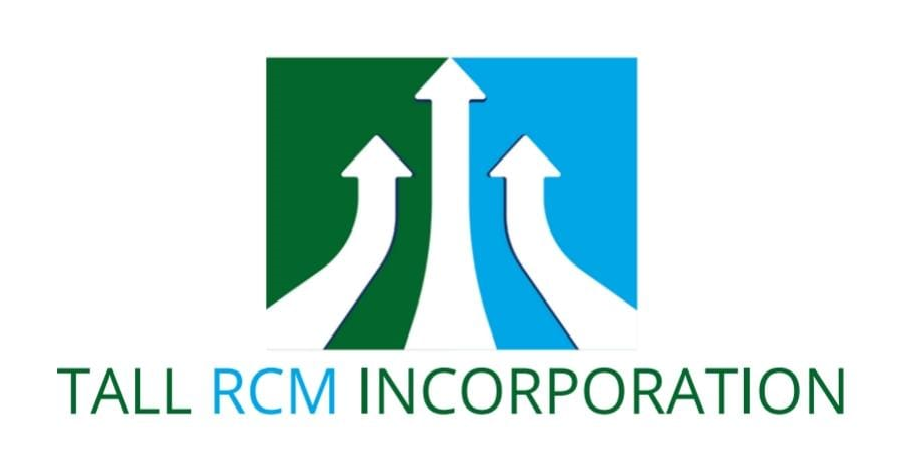Quick and Easy Credentialing Service in the USA by Tall Rcm Incorporation

Credentialing is the method of confirming a provider’s credentials and qualifications to guarantee that they are capable of providing healthcare services. CMS/Medicare, Medicaid, and Commercial insurance programs, as well as hospitals and surgical centers, all require this procedure.
A key phase in the revenue cycle is provider credentialing, which is the method of affiliating a practitioner or a provider with payers. Patients can pay for emergency care with their health cards, and providers can get reimbursed for the services they offer. As a result, healthcare professionals ought to be registered and credentialed with maximum payers possible; failure to do so will lead patients to seek out competing providers who are enrolled in the health insurance agencies to which they are subscribed.
Verifying provider’s certificates to ensure that they are legitimate and current is the final step in the provider credentialing process. Their medical license, malpractice insurance, and DEA are all included in this.
Additional details needed to furnish the credentialing process:
- Information on medical schools
- Information on internships, residencies, and fellowships
- Board certifications
- Curriculum Vitae of the Provider.
Tall Rcm Incorporation: Reliable Medical provider credentialing service in the USA
Tall Rcm Incorporation’s Credentialing service will help you qualify as a customer to become an in-network provider so that you can obtain allowable reimbursements from each carrier. While it was once deemed “optional” for healthcare practitioners to be in-network with insurance companies, it is now more important than ever for clinicians to be in-network with insurance companies. The credentialing staff offers a robust and professional program to help you become an in-network agent for the insurance providers for whom you choose to deal. If you need assistance, we will provide advice based on an overview of your specialty and service area.
Physician credentialing is a continuous procedure that must be recertified every 3 to 5 years. Tall Rcm Incorporation provides a program that handles re-credentialing, notifies you when documents expire, and keeps your CAQH profile up to date. We partner with both large and small practices, including sole providers as well as large 30+ physician practices, with both community and person registration with Medicare, Medicaid, and Commercial Payers. Our staff has vast experience and skills in a variety of specialties and programs, including DME.
The Process of Medical Provider Credentialing Services in the USA
- Application Evaluation. The credentialing application is normally issued by the agency to the healthcare provider. He or she is in charge of filling out the paperwork – which may be hundreds of pages long – and adding all necessary documents, such as board registration, college degrees, and other credentials. The contractor submits the completed application to the agency to which he or she intends to offer services.
- Primary Source Documentation. The agency is also in charge of attaching all supporting evidence, such as claims history, context screening reports, primary source checking, and so on.
- Examination. The payer examines the proposal to see whether the healthcare provider satisfies the payer’s requirements. The provider’s degree (and accreditation of that program), residency or fellowship, recommendations, malpractice case experience, license, and other factors will all be taken into account.
- Follow-up with payers. Follow-up on all the submitted credentialing requests.
- Data Entry. Capturing records, tagging images, and connecting them to individual providers/facilities are all part of the data entry vertical.
- Data maintenance for Providers. Updating the provider information as per the policy and protocols, as well as the CAHQ profile.
Why outsource your Credential and Re-Credential Service to an expert?
If you decide to do physician credentialing in-house, you’ll need to allocate resources to compile and send out application materials to new providers, monitor completion and collect documents, complete the facility portion of the application and credentialing process (such as primary source verification, malpractice claims review, and so on), send the applications to payers and then react to any rogue applications. Additionally, the individual (or team) is responsible for keeping track of re-credentialing deadlines and initiating, tracking, and completing the process each time a provider is due for re-credentialing. They must also establish and retain experience in the provider credentialing phase, which includes keeping up with market shifts, credentialing patterns, and payer criteria. Due to a lack of experience within the credentialing staff, payers can deny applicants or require additional details, lengthening the period between the bid and start for a new provider – and delaying the delivery of services to patients. As a result, more healthcare institutions prefer to outsource physician credentialing services to a specialized third-party provider. Tall Rcm Incorporation is one such reliable partner.
We handle the credentialing process from beginning to end as professionals in medical provider credentialing. That ensures the staff can handle more of the duties that would otherwise fall to the facility, freeing up the team to focus on more critical tasks. We partner with providers to complete the initial submission, conduct the organization’s due diligence activities, such as primary source authentication and history monitoring, and collaborate with payers to ensure prompt approval and expedite the whole process.
If you are looking for a Medical provider credentialing service in the USA, then contact us at sales@tall-rcm.com, you can also reach us at info@tall-rcm.com. If you require an immediate response, give us a call at 973-206-9469.
FAQS
Yes, healthcare providers have the right to access any record during the credentialing period and officially correct any errors.
The provision that healthcare facilities verify closely with the agency issuing permits, approvals and other related qualifications to guarantee that the provider has the certification in good standing is known as primary source verification. For example, a hospital would contact a state licensing board to confirm that a physician is licensed to practice medicine in that state.
Clients sometimes say they can’t afford to outsource credentialing doctors, but after calculating the cost of handling the medical practitioner credentialing procedure in-house, they discover that outsourcing saves them money. While the in-house team can tackle the task of credentialing one or two (or twenty) providers at a time, outsourcing it to an expert scales the everyday credentialing number exponentially. This enables streamlining the processes and effectively helps save time and resources.

